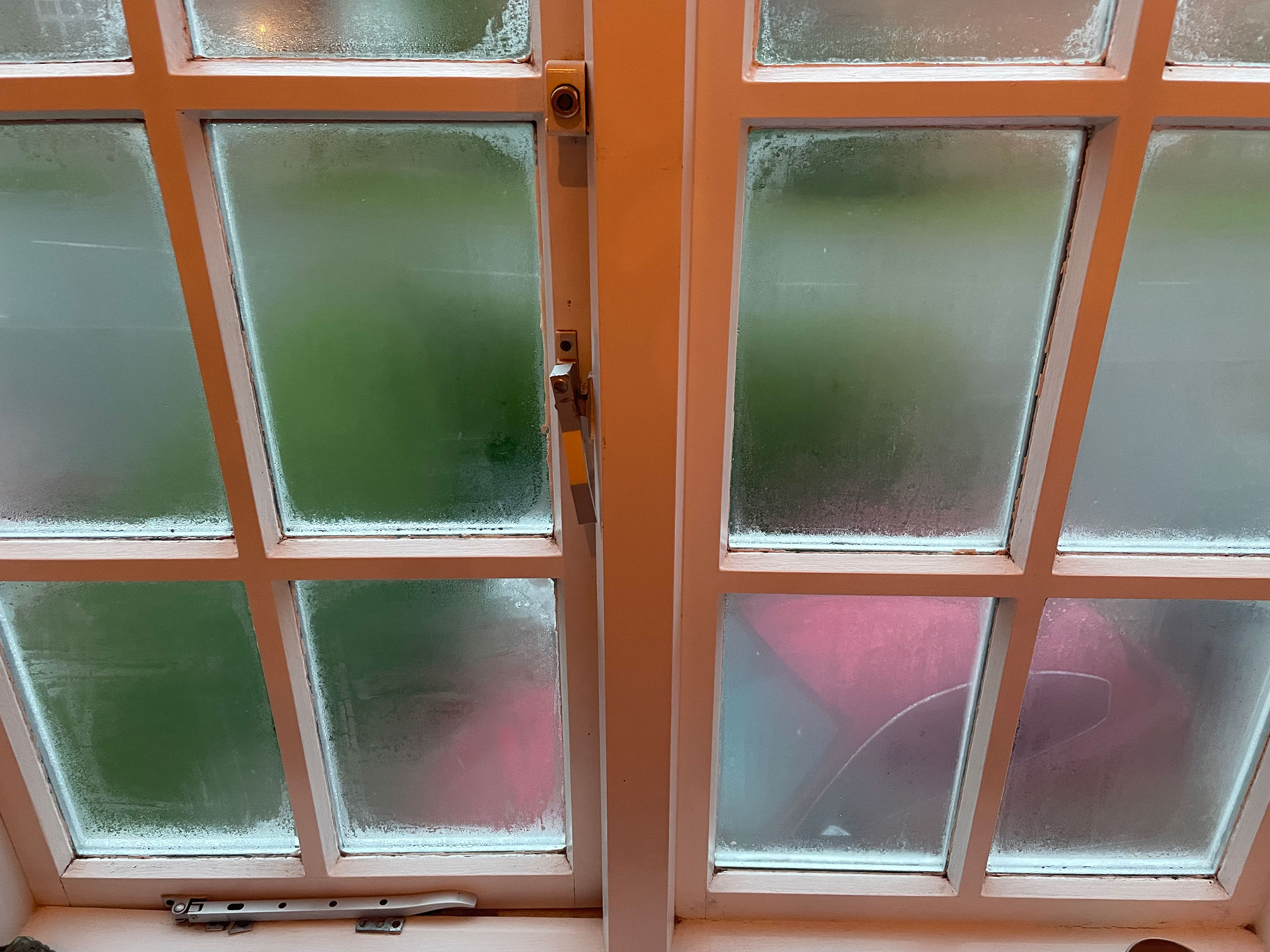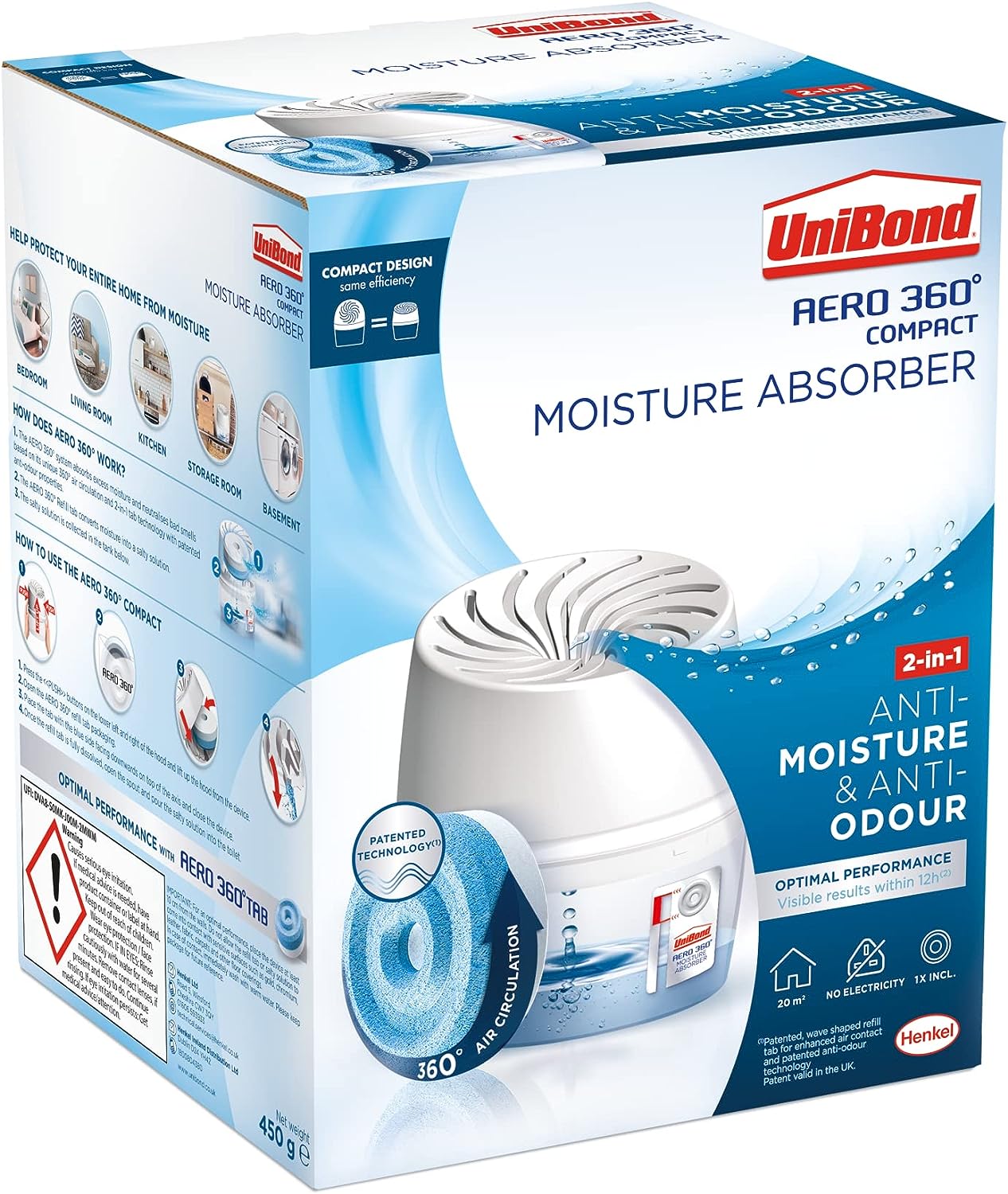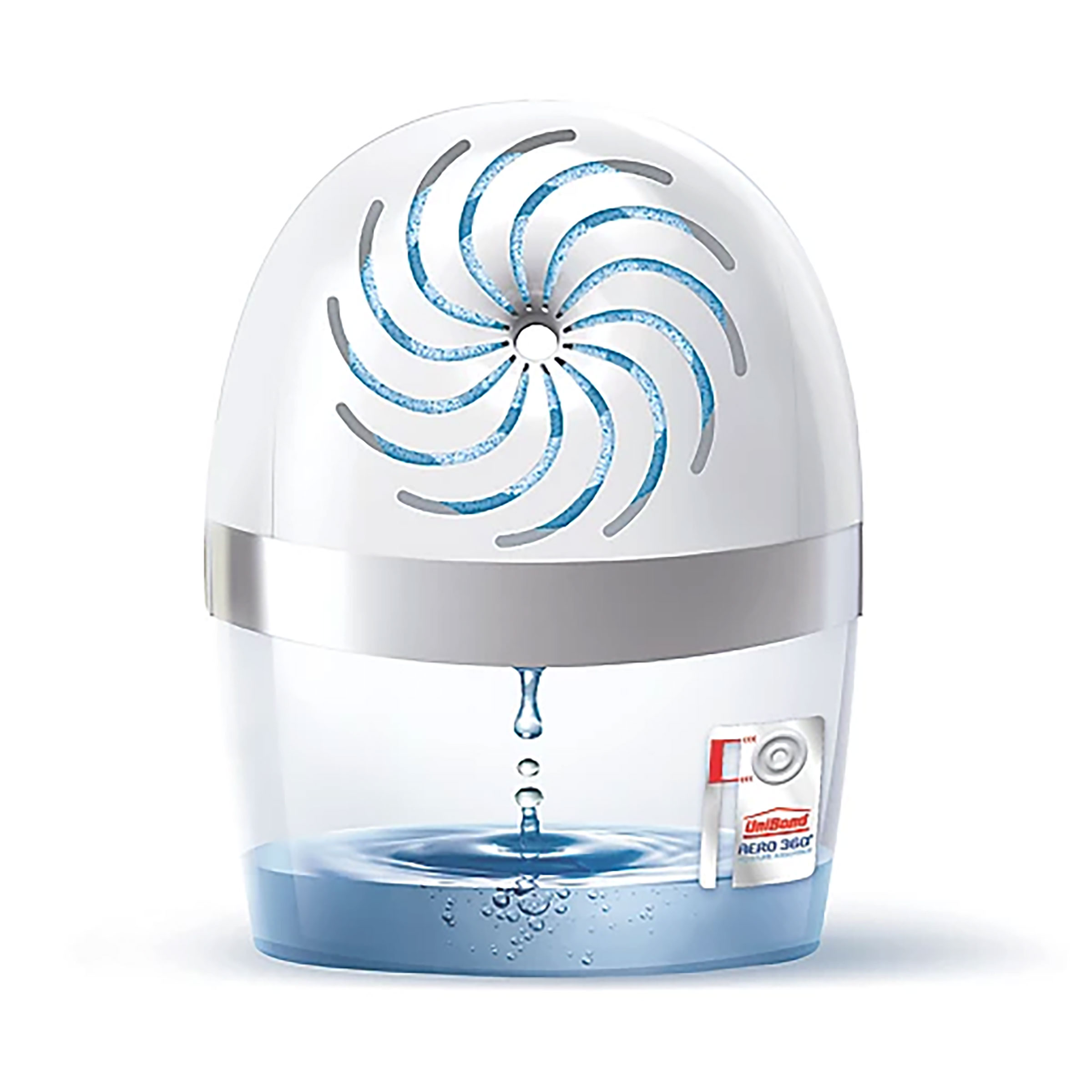This cheap moisture absorber from Tesco cleared up my window condensation
When I chucked this little moisture absorber from Tesco in my trolley I had no idea how much of a difference it would make to my window condensation — and it is on offer this Black Friday

In all honesty, I only picked up the Unibond AERO 360 Compact Moisture Absorber (which is currently on offer for just £12 at Amazon) when grabbing a few bits and bobs in my local Tesco as it was on offer at the front of the shop when I walked in.
Come Autumn, window condensation in our old cottage is a massive problem and every day ours are streaming with condensation when we wake up in the morning. I was hoping that this little device could help a bit.
I have to admit, I didn't really hold out much hope once I unboxed it — the absence of any batteries, electrical plugs or motors made the whole thing seem rather unpromising. Plus, it only measures 15.2x14.7x19.7cm.
Any yet, it really did work, so much so that I popped out the next morning and bought a couple more for the all the bedrooms.

How does the moisture absorber work?
With no electricity required, this is such a simple way to cut down on condensation in any area of the home – plus it is effective in spaces up to 20m2.
The unit is made up of a top section that looks a little bit like a fan, containing the refillable tablet that contains moisture absorbing crystals and odour neutralising ingredients – perfect for those musty smells that seem to go hand-in-hand with damp spaces. The design of the top section helps to circulate air through the unit.
The bottom part of the device is where the water taken out of the air in the room is collected. When it is full, you simply remove the top section and empty out the little tank.
Get the Homebuilding & Renovating Newsletter
Bring your dream home to life with expert advice, how to guides and design inspiration. Sign up for our newsletter and get two free tickets to a Homebuilding & Renovating Show near you.
The tablet inside gradually disintegrates and can be expected to last around 90 days before needing to be replaced with a refill.

I placed our moisture absorber on the window cill in our bedroom, where the condensation in the house is worst. Although it doesn't necessarily add anything to the overall interior design scheme of the space, it is small enough for it not to matter too much – plus it can easily be moved out of sight when needed.
The tank took about two to three days to reach the refill level, after which the blue liquid can simply be tipped out.
Can a moisture absorber replace a dehumidifier?
There are lots of reasons why the moisture absorber might be a better option than a dehumidifier. Firstly, they are much much cheaper to buy than dehumidifiers and there are no dehumidifier running costs to worry about. Then there is the fact that it doesn't need to be located near an electrical socket. It is also much smaller than most dehumidifiers and, finally, it is silent to run — and the noise of dehumidifiers can be annoying at nighttime.
However, for all their benefits, these handy moisture absorbers are not as effective at dealing with condensation and damp as dehumidifiers are. Plus, dehumidifiers can dry laundry faster, purify the air and even help to make a house feel warmer.
If you fancy getting your hands on a dehumidifier that won't take up too much space this Black Friday, the COMFEE'Dehumidifier 20L from Amazon is currently on offer for £178.49.
Natasha was Homebuilding & Renovating’s Associate Content Editor and was a member of the Homebuilding team for over two decades. In her role on Homebuilding & Renovating she imparted her knowledge on a wide range of renovation topics, from window condensation to renovating bathrooms, to removing walls and adding an extension. She continues to write for Homebuilding on these topics, and more. An experienced journalist and renovation expert, she also writes for a number of other homes titles, including Homes & Gardens and Ideal Homes. Over the years Natasha has renovated and carried out a side extension to a Victorian terrace. She is currently living in the rural Edwardian cottage she renovated and extended on a largely DIY basis, living on site for the duration of the project.

